
The Antarctic Treaty and related agreements, collectively known as the Antarctic Treaty System (ATS), regulate international relations with respect to Antarctica, Earth's only continent without a native human population. It was the first arms control agreement established during the Cold War, designating the continent as a scientific preserve, establishing freedom of scientific investigation, and banning military activity; for the purposes of the treaty system, Antarctica is defined as all the land and ice shelves south of 60°S latitude. Since September 2004, the Antarctic Treaty Secretariat, which implements the treaty system, is headquartered in Buenos Aires, Argentina.
The Protocol on Environmental Protection to the Antarctic Treaty, also known as the Madrid Protocol, is a complementary legal instrument to the Antarctic Treaty signed in Madrid on October 4, 1991. It entered into force on January 14, 1998.

The Agreed Measures for the Conservation of Antarctic Fauna and Flora is a set of environmental protection measures which were accepted at the third Antarctic Treaty Consultative Meeting in Brussels in 1964. The Agreed Measures were formally in force as part of the Antarctic Treaty System from 1982 to 2011, when they were withdrawn as the principles were now entirely superseded by later agreements such as the 1991 Protocol on Environmental Protection to the Antarctic Treaty. The Agreed Measures were adopted in order to further international collaboration within the administration of the Antarctic Treaty System and promote the protection of natural Antarctic ecological systems while enabling scientific study and exploration.

Hope Bay on Trinity Peninsula, is five kilometres long and three kilometres wide, indenting the tip of the Antarctic Peninsula and opening on Antarctic Sound. It is the site of the Argentinian Antarctic settlement Esperanza Base, established in 1952.
A flag of Antarctica is a flag or flag design that represents the continent of Antarctica. As a condominium with no single governing body, it does not have an official flag of its own. However, several designs have been created for the purpose of representing the continent.

The Scientific Committee on Antarctic Research (SCAR) is an interdisciplinary body of the International Science Council (ISC). SCAR coordinates international scientific research efforts in Antarctica, including the Southern Ocean.
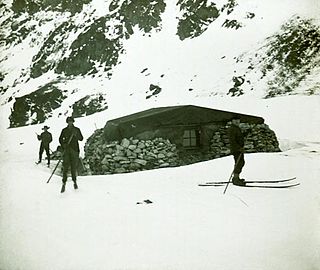
Scotia Bay is a bay 4 km (2.5 mi) wide, lying immediately east of Mossman Peninsula on the south side of Laurie Island, in the South Orkney Islands of Antarctica. It was discovered and roughly charted in the course of the joint cruise by Captain George Powell and Captain Nathaniel Palmer in 1821. It was surveyed in 1903 by the Scottish National Antarctic Expedition under William Speirs Bruce who named it for the expedition ship Scotia.
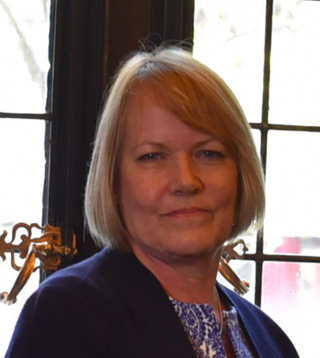
Dame Jane Elizabeth Francis, is the Director of the British Antarctic Survey. She previously worked as Professor of Palaeoclimatology at the University of Leeds where she also was Dean of the Faculty of Environment. In 2002 she was the fourth woman to receive the Polar Medal for outstanding contribution to British polar research. She is currently the Chancellor of the University of Leeds.
Pendulum Cove is a cove at the north-east side of Port Foster, Deception Island, in the South Shetland Islands of Antarctica. The name of the cove derives from the pendulum and magnetic observations made there by the British expedition under Henry Foster in 1829.

Christo Pimpirev is a Bulgarian scientist (geologist) and polar explorer.
Lambda Island is an island lying immediately north-west of Delta Island in the Melchior Islands, of the Palmer Archipelago in Antarctica. The island, the largest in the north-western part of the island group, was first roughly charted and named "Île Sourrieu" by the French Antarctic Expedition, 1903–05 under Jean-Baptiste Charcot, but that name has not survived in usage. The current name, derived from lambda, the 11th letter of the Greek alphabet, was given by Discovery Investigations personnel who roughly charted the island in 1927. The island was surveyed by Argentine expeditions in 1942, 1943 and 1948.

Buromskiy Island is a small island lying 0.6 km (0.37 mi) south of Haswell Island in the Haswell Islands of Antarctica. About 200 m long and 100 m wide, it was discovered and mapped by the Australasian Antarctic Expedition under Douglas Mawson, 1911–14. It was photographed by the Soviet expedition of 1958 and named for N.I. Buromskiy, expedition hydrographer who lost his life in the Antarctic in 1957. It lies 2.7 km north of Mabus Point, the site of Russia's Mirny Station.
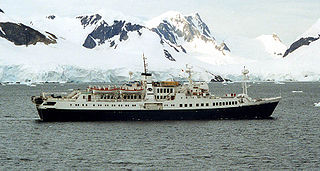
Paradise Harbour, also known as Paradise Bay, is a wide embayment behind Lemaire and Bryde Islands in Antarctica, indenting the west coast of Graham Land between Duthiers and Leniz Points. The name was first applied by whalers operating in the vicinity and was in use by 1920. Argentina's Almirante Brown Antarctic Base stands on the coast of the bay, as does Chile's González Videla Antarctic Base.
Council of Managers of National Antarctic Programs (COMNAP) is an international association that develops and promotes best practice in managing the support of scientific research in Antarctica. Members are composed of national research programs who respective governments are signatories to the Antarctic Treaty committing the continent as a natural reserve.
Florica Topârceanu is an Antarctic researcher, best known for her work was on Antarctic aquatic viruses and the development of the Antarctic scientific community in Romania. She was the first Romanian woman biologist to study life in Antarctica and the first Romanian woman expert to the Antarctic Treaty.
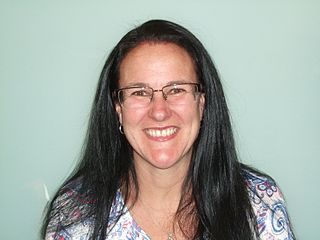
Catherine K. King is an Australian ecotoxicologist who studies sub-Antarctic and Antarctic regions, with a focus on climate change and the impacts of contaminants and environmental stressors in terrestrial and marine ecosystems.
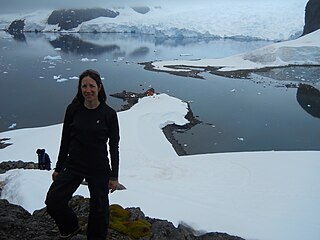
Patricia Veronica Ortúzar is a polar scientist with the Direccion Nacional del Antartico in Argentina. She is the head of the Environment Management and Tourism Program of the Direccion Nacional del Antartico. She is the vice chair of the Committee for Environmental Protection (CEP) within the Antarctic Treaty System.

The Antarctic Treaty issue is a postage stamp that was issued by the United States Post Office Department on June 23, 1971. Designed by Howard Koslow, it commemorates the tenth anniversary of the Antarctic Treaty, and is notable as Koslow's first postage stamp design.
Events in the year 2002 in the Antarctica.














